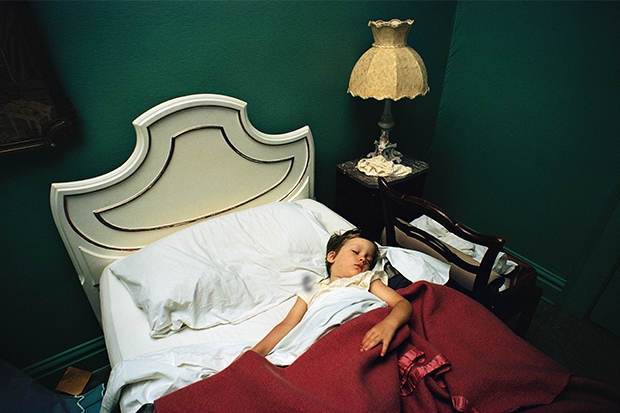In 1965 William Eggleston took the first colour photograph that, he felt, really succeeded. The location was outside a supermarket in Memphis, Tennessee; the time — to judge from the rich golden light and long shadows — late afternoon. Eggleston’s subject — a young man with a heavily slicked, early Elvis hairstyle stacking trolleys outside the shop — was as ordinary as he could be. But the result was a photographic masterpiece.
It is included in the exhibition William Eggleston: Portraits at the National Portrait Gallery, although, by most definitions, it is not a portrait. Indeed, it is as hard to say just what it is as it is to explain exactly why it is so good.
Actually, great pictures are often images of very commonplace sights. The ‘Mona Lisa’ is just a woman smiling in front of a view — the theme of a trillion selfies; Van Eyck’s ‘Arnolfini Portrait’ simply depicts two people standing in a room. Somehow, you feel that this moment outside the Memphis supermarket was significant, even if nobody (including perhaps the photographer) could say what it means.
Many of the works at the NPG seem to present fragments from a drama: one shows a lover of Eggleston’s, her face streaked with tears. Another features a friend named T.C. Boring, described in the exhibition as ‘an eccentric dentist’, standing stark naked and pensive in a bedroom flooded with blood-red light and adorned with random spray-painted words: ‘God’, ‘Mona’, ‘Tally ho’.
In both cases, as often in Eggleston’s best images, something is clearly going on, but we aren’t quite sure what. At times, as with the supermarket-trolley parker, there is a sense of mysterious revelation. The great blues singer Mississippi Fred McDowell lies in a sumptuous satin-lined coffin, looking not so much dead as transfigured.








Comments
Join the debate for just £1 a month
Be part of the conversation with other Spectator readers by getting your first three months for £3.
UNLOCK ACCESS Just £1 a monthAlready a subscriber? Log in